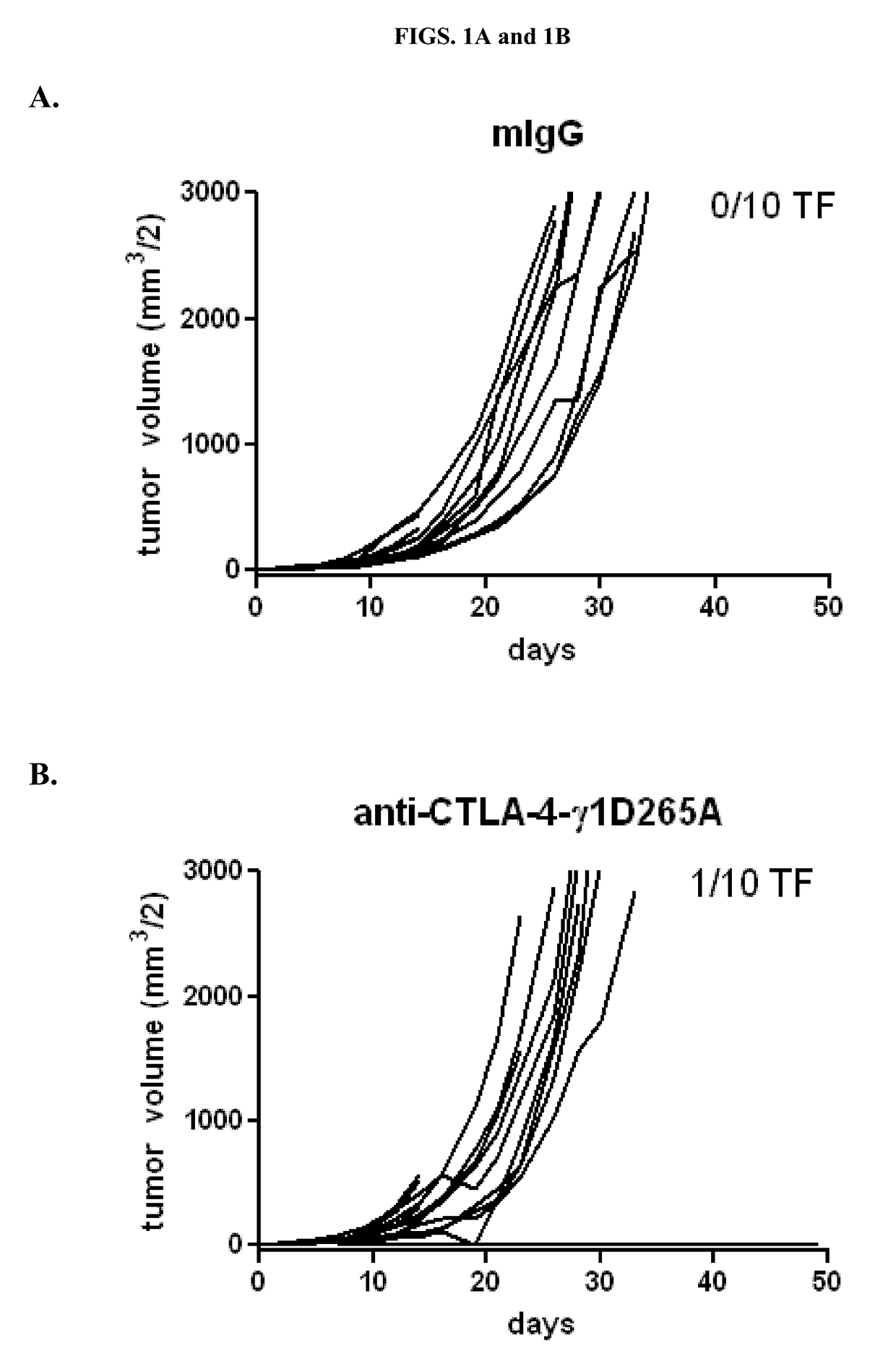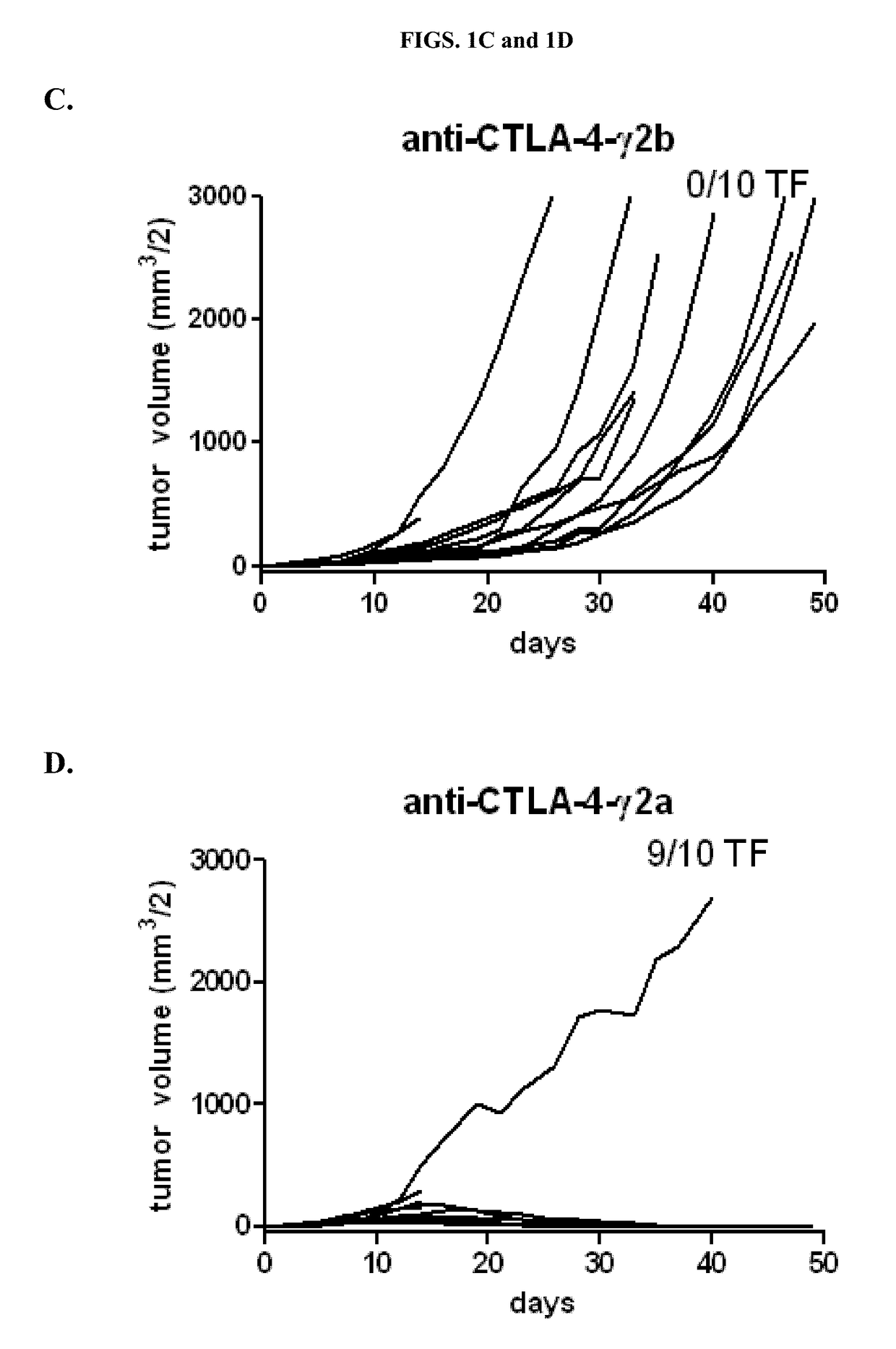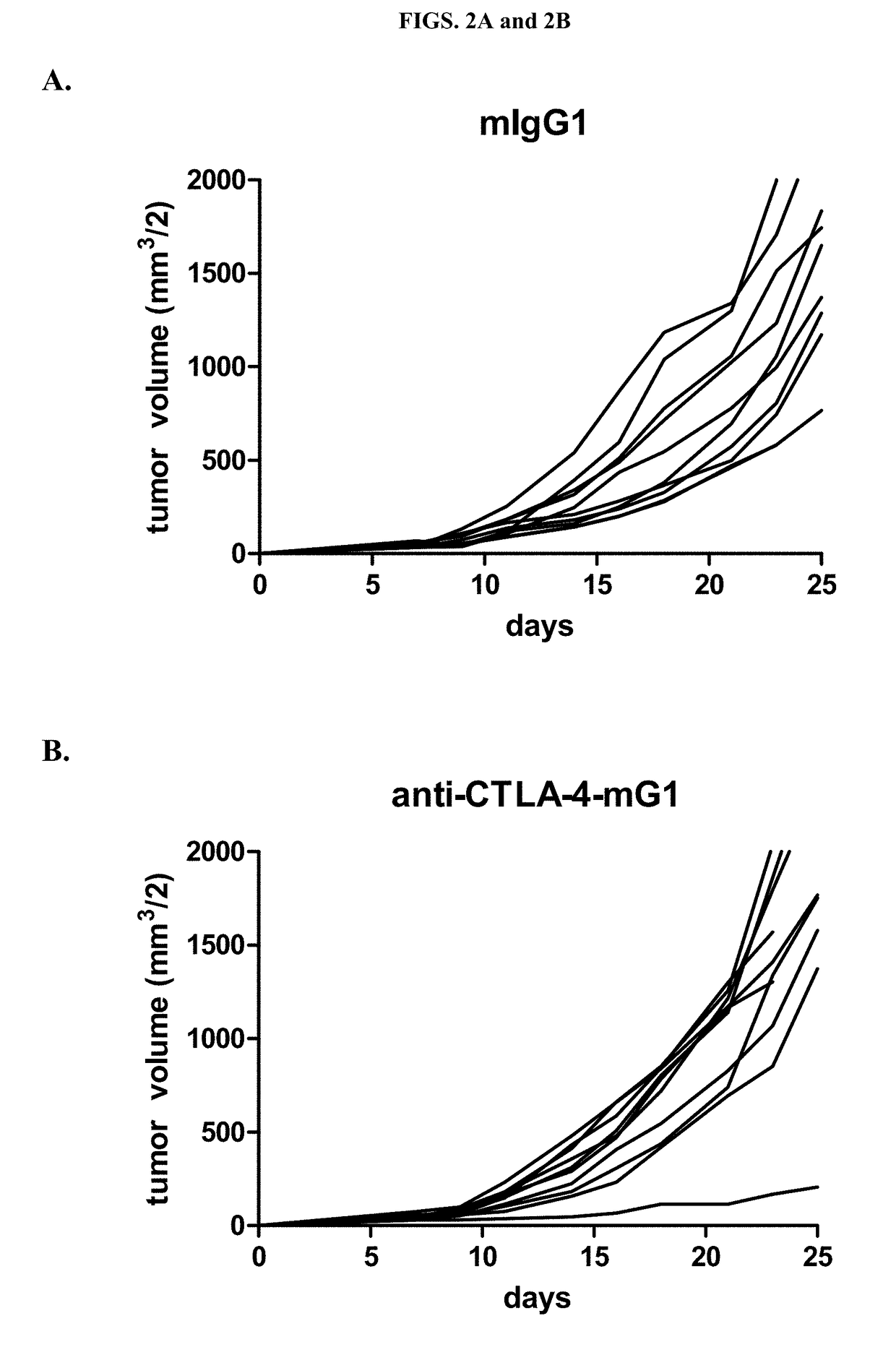Ipilimumab variant with enhanced ADCC
a technology of ipilimumab and adcc, which is applied in the field of ipilimumab variant with enhanced adcc, to achieve the effect of enhancing adcc activity and fc receptor binding
- Summary
- Abstract
- Description
- Claims
- Application Information
AI Technical Summary
Benefits of technology
Problems solved by technology
Method used
Image
Examples
example 1
Anti-Tumor Activity of Variant Anti-CTLA-4 Isotypes in Murine CT26 Colon Adenocarcinoma Tumor Model
[0093]To determine the relative potency of different isotypes of anti-CTLA-4 in anti-tumor activity, three of the four isotypic variants of anti-CTLA-4 antibody 9D9 (Peggs et al. (2009) J. Exp. Med. 206:1717) were generated (anti-CTLA-4-γ1D265A, anti-CTLA-4-γ2b, and anti-CTLA-4-γ2a, which bind equally well to CTLA-4+ cells) were tested together with a mouse IgG1 isotype control for anti-tumor activity in a syngeneic CT26 colon adenocarcinoma model. The control antibody used for the studies is a recombinant human anti-diphtheria toxin antibody with a mouse IgG1 isotype.
[0094]Ten BALB / c mice were subcutaneously injected with 1×106 CT26 tumor cells on day 0. Treatment was begun at Day 7 after implantation. Tumors were measured, randomized into treatment groups so as to have comparable mean tumor volumes (45-50 mm3 / 2), and then treated intraperitoneally (IP) with the designated antibody (2...
example 2
Anti-Tumor Activity of Variant Anti-CTLA-4 Isotypes in MC38 Murine Colon Adenocarcinoma Tumor Model
[0095]The anti-tumor activity of different anti-CTLA-4 isotypes was also assessed in a MC38 colon adenocarcinoma tumor model. C57BL / 6 mice were each subcutaneously injected with 2×106 MC38 tumor cells. After 7 days, tumor volumes were determined and mice were randomized into treatment groups so as to have comparable mean tumor volumes (44.7-49.2 mm3 / 2). Anti-CTLA-4 antibodies of four different isotypes (IgG1, IgG1D265A, IgG2a and IgG2b), formulated in PBS, were administered IP on Days 7, 10 and 14 at 200 μg per dose in a volume of 200 μl. Tumor volumes were recorded three times weekly. The changes in mean tumor volumes and median tumor volumes of the mice of groups treated with the different anti-CTLA-4 isotypes were also calculated. Results are presented at FIGS. 2A-2E and 3A-3B.
example 3
Anti-Tumor Activity of Variant Anti-CTLA-4 Isotypes in an Immunogenic Sa1N Murine Fibrosarcoma Tumor Model
[0096]The anti-tumor activity of anti-CTLA-4 was also assessed in an immunogenic Sa1N fibrosarcoma tumor model. A / J mice were subcutaneously injected with 2×106 Sa1N tumor cells. After 7 days, tumor volumes were determined and mice were randomized into treatment groups so as to have comparable mean tumor volumes (132.4-146.5 mm3 / 2). Anti-CTLA-4 (9D9) antibodies having the IgG1, mutated IgG1D265A, and IgG2a isotypes were formulated in PBS and administered IP on Days 7, 11 and 14 at 200 μg per dose in a volume of 200 μl. Tumor volumes were recorded twice weekly. Results are presented at FIGS. 4A-4C and 5A-5B.
PUM
| Property | Measurement | Unit |
|---|---|---|
| volumes | aaaaa | aaaaa |
| volume | aaaaa | aaaaa |
| volume | aaaaa | aaaaa |
Abstract
Description
Claims
Application Information
 Login to View More
Login to View More - R&D
- Intellectual Property
- Life Sciences
- Materials
- Tech Scout
- Unparalleled Data Quality
- Higher Quality Content
- 60% Fewer Hallucinations
Browse by: Latest US Patents, China's latest patents, Technical Efficacy Thesaurus, Application Domain, Technology Topic, Popular Technical Reports.
© 2025 PatSnap. All rights reserved.Legal|Privacy policy|Modern Slavery Act Transparency Statement|Sitemap|About US| Contact US: help@patsnap.com



